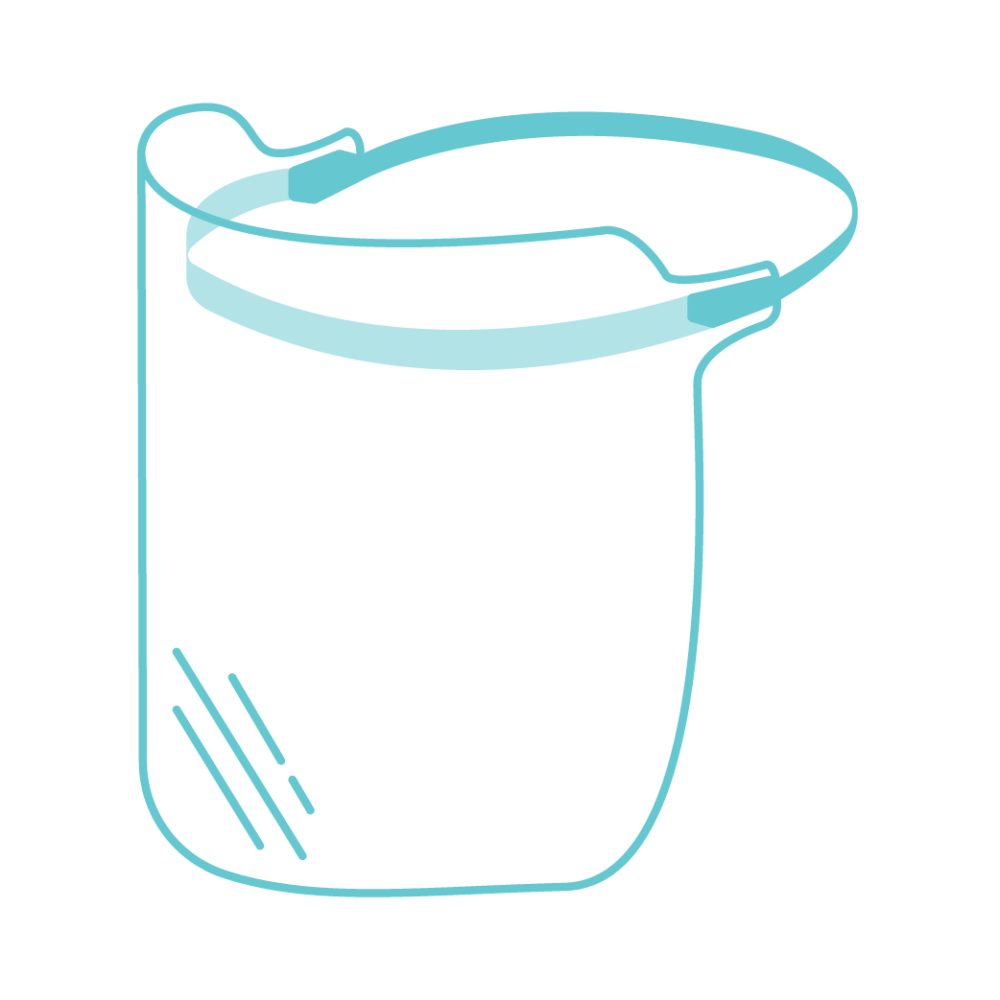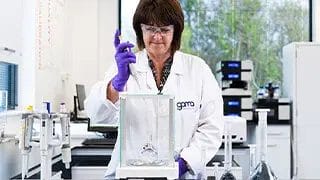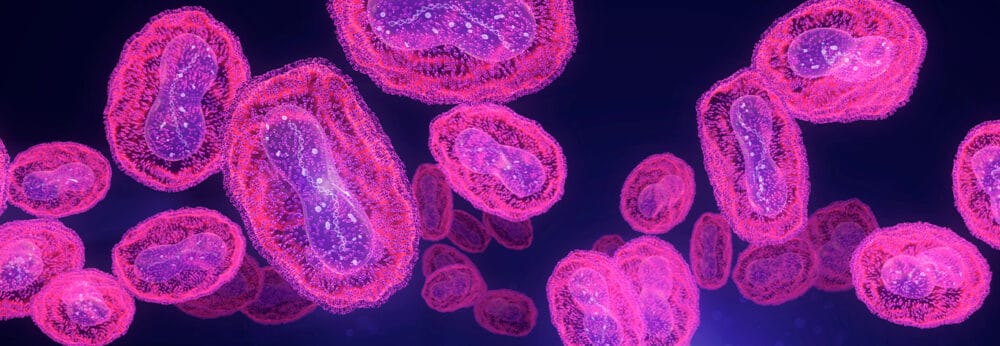Posted
12th June 2020
Research
The SARS-CoV-2 virus that causes COVID-19 is primarily spread by respiratory droplets, although other routes of transmission (including contact with contaminated people and surfaces) play a role too. One of the most important ways to prevent the spread of the respiratory droplets that transmit SARS-CoV-2 is through physical distancing. Where this is not possible, respiratory protection may be required.
The type of respiratory protection required – be it a face covering, a face mask, or a face shield – will depend on the circumstances. This blog outlines the various types of respiratory protection that is available, and where it should be used. Physical distancing is defined as keep a 2m distance from other people who do not live in your household. Where this isn’t possible, current guidelines recommend the use of respiratory protection. Here are the various types of respiratory protection and where they should be used:
Fabric face covering
These homemade or purchased face coverings, typically made from cotton or cotton mixed with other materials, are not made to any testing standards so will provide a variable level of protection. PHE have some useful guidance about how to make face coverings and where/when to use them. From Monday 15th June, face coverings will be mandatory on public transport in England. These face coverings are designed to reduce the spread of respiratory droplets from the wearer, and are not designed to protect the wearer from incoming droplets.


Surgical or medical masks
There are various types and grades of surgical (aka medical) masks. These are tested to specific standards in terms of microbial filtration, breathability, and fluid repellence. Healthcare workers in clinical settings should wear fluid-repellent Type IIR surgical masks, which both reduce the spread of respiratory droplets from the wearer and protect the wearer from incoming droplets.
Face shields
These are designed and built to standards to ensure that they are safe to use and effective for their intended purpose. Face shields have several advantages over faces masks – for example they cover both the eyes and respiratory tract, prevent the contact of hands with the face (especially the eyes, mouth, and nose), and can be worn comfortably for longer periods. Therefore, face shields offer an attractive alternative to face masks or coverings in non-clinical and community settings (more on that in this article here).


FFP2/3 (aka N95) respirators
There are various styles of filtering facepiece (FFP) masks. FFP3 masks are recommended in the UK for healthcare workers undertaking aerosol-generating procedures (such as intubation and extubation). They are not recommended for routine use by staff in hospitals or in community settings.
One of the most important things to remember when wearing any type of respiratory protection to reduce the risk of COVID-19 (or any other respiratory pathogen) is that there is a fair amount of risk related to incorrect use of respiratory protection. The outside of masks can become heavily contaminated during use, and you should always avoid touching the outside of masks / face shields, perform hand hygiene before and after touching masks / face shields, and dispose of them in appropriate waste streams. Respiratory protection worn in the correct setting and handled with care is a vital part of our response to this COVID-19 pandemic, both in hospital and community settings.
SHARE THIS ARTICLE
Tags
Latest News
Celebrating 20 Years of GAMA Healthcare: Our Story
This month, GAMA Healthcare celebrates 20 years of helping prevent…
Norovirus: Understanding its transmission and prevention in the UK
Introduction Norovirus is recognised as the leading cause of viral gastroenteritis…
Clean Between to Reduce Healthcare-Associated Infections
Healthcare-associated infections (HAIs) are a significant concern for healthcare facilities…
Mpox: emergence of a new threat
A new threat related to mpox is emerging, in the…










